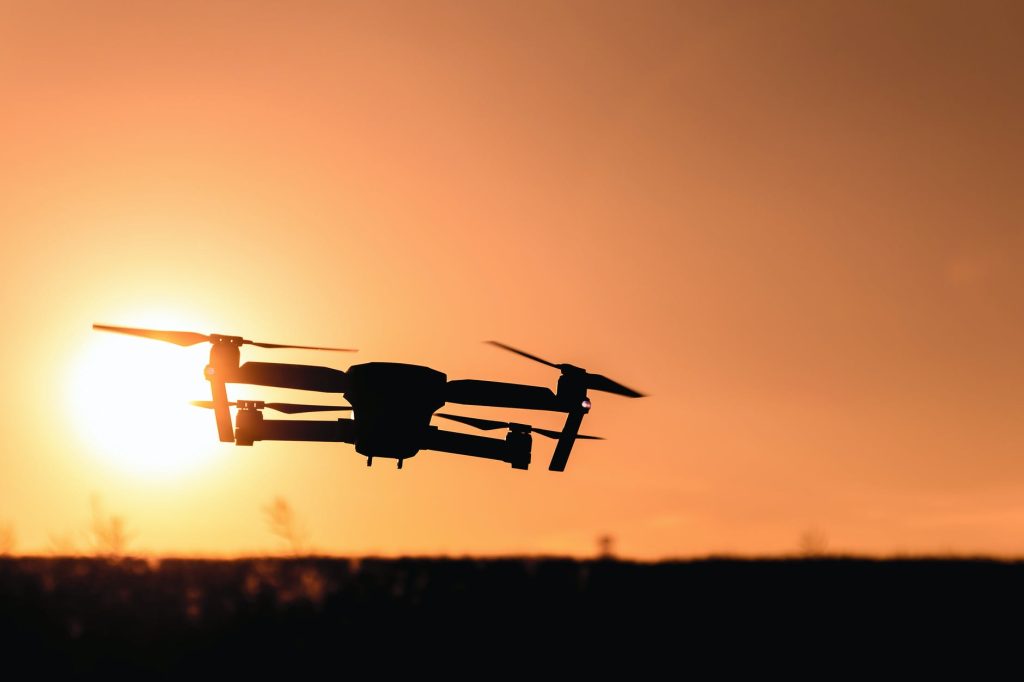By: Marco Verrocchio, Danilo delle Fave

Introduction
In recent years, the development of Unmanned Aerial Vehicles (UAVs) has increased rapidly, thanks to the successful use in unconventional warfare theatres, as well as for civil purposes, such as environmental disasters. Ranging from Aerial Reconnaissance to package delivery, their use is now consolidated all over the world in everyday life. Due to the large use of them in different fields, there is a significant interest in developing drones conceived to accomplish specific military purposes. Among them, today a new kind of drones is proving very popular among armed forces: The loitering munitions swarm. This weapon system combines the advantages of a UAV with the specifics of a swarm SAM rocket system with anti-armor, anti-personnel and anti-material targets. Called also “suicide drone” or “kamikaze drone”, a loitering munition differs from a conventional UAV because it is only equipped with an explosive warhead in order to crash towards the target.
Although the interest in this kind of weapon rose recently, the development of an unmanned flying bomb can be tracked back to Nazi’s Germany. The German V-1 (Vergeltungswaffen 1 - retaliation weapon 1) can be considered as an ancestor of the loitering munitions weapon. It was an unmanned jet propelled flying bomb used to terrorize the civilians of Allied cities, especially London and Antwerp. In addition to be unmanned and one-target, the V-1 shared different features with the current loitering system, including low-cost production and easy assembly. Nowadays the modern loitering munition has been developed on a large scale by the Israeli Harop loitering munition system: presented in February 2009 at the Aero-India show, he represents the main model of modern loitering munitions for airforces around the world.
The modern use of loitering munitions
At the beginning, the initial model of loitering munition was designed to autonomously attack one kind of defensive installation, with the development of the communication system, technology, processing and miniaturized sensors, today the loitering munitions can serve a range of functions in war once reserved for crewed aircraft or artillery.
An example of their use during a conflict, and how they can influence the strategy of the warfare system, was during the Nagorno-Karabakh conflict, where both Azerbaijan and Armenia used the loitering munitions in order to destroy the anti-air defences of the opponent. In addition to that, the loitering munitions can be exploited to turn into a missile and crash into a target without needing direct human supervision.
This action was seen last year in march, when a drone was used in this way against a human target. The episode happened in Libya, and there was a convoy of the Libyan National Army of Khalifa Haftar, which was attacked by drones, that may have included a Kargu-2 autonomous quadcopter and loitering munitions.
Through the use of the loitering munitions during conflict or not, it is clear the fundamental importance of the airspace in the battlefield and moreover the necessity to establish a regulation of their use, because at the moment this technology, which enables this weapon system to be used without human control and to target people, is being used without regulation.
The future of unmanned warfare
Loitering munitions and its systematic use has highlighted the new frontiers of warfare. As proven by recent experiments and projects, militaries around the world are developing programs in order to introduce the use of massive swarm attacks by drones, and countermeasures to drone warfare. Loitering munitions represents a peculiar use of drone warfare, which could be exploited primarily in the context of hybrid warfare. The most advanced militaries have the technology to implement countermeasures, from electromagnetic interference to anti-drone drones, while middle and small armies are the most affected by these cheap and effective weapons.
The Nagorno-Karabakh conflict has shown how efficient are the loitering munitions against old SAM systems, which were the main target of the drone strikes by Azeri army: after annihilating air defences, the aviation had proceed to operate without the risks of anti-aircraft fire, and with the help of the loitering munitions, it destroyed the Armenian fortification, allowing a swift victory. Without loitering munitions, the war would have been dragged into a stalemate, as the Armenians would have entrenched themselves with the help of the mountains. Therefore, these new weapons would probably see implementation by military forces, like Iran and Turkey, who would provide their proxies with them. For instance, the Houtis or Hamas have the interest to economically logorate their adversaries, Saudi Arabia and Israel: the high cost of air defence systems as the THAAD, could be exploited to increase the “war fatigue” of their enemies, with the use of cheap loitering munitions.
Unmanned warfare is going to revolutionize the way in which war is fought: low tech will present the main challenge to the advanced militaries around the world, since the massive use of loitering munitions can saturate defence systems, no matter how advanced they are. The mix between high tech and low tech could drop to its knee even the mightiest army: loitering munitions represents pre-eminently the spearhead of low tech warfare in modern wars.